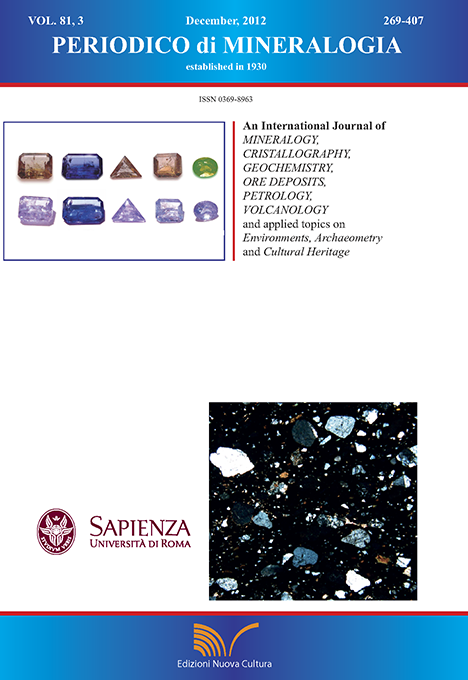Hydrogeochemical features of spring waters in the Sheet N.348 “Antrodoco” area
DOI:
https://doi.org/10.2451/2012PM0016Keywords:
hydrogeochemistry, spring waters, chemical analyses, Antrodoco sheet area, central ItalyAbstract
The Geological Survey of Italy/Land Resources and Soil Protection Dept. of ISPRA is achieving a project which foresees the harmonized realization of different surveys, including hydrogeological activities, as an approach for a possible improvement of the CARG Project (Italian geological mapping), in the test-site of the Antrodoco Sheet territory, located between Lazio and Abruzzo regions (Rieti and L’Aquila province, Central Italy). One of the first targets was the hydrochemical characterization and classification of springs, along with their grouping on the basis of their affiliation to hydrogeochemical facies and the definition of their hydrogeochemical trends, contributing to assess groundwater circulation model in the involved aquifers. In addition, the study allowed us to evidence, by means of different analytical criteria, two aspects of the hydrogeochemical asset of the territory: (i) a regional variability model, which is explicative of the most examined factors; (ii) a residual number of outlier elements after the results of the principal component analysis, due to local (e.g., geological-structural or anthropogenic) factors.
The main obtained results were: (i) all samples may be classified as bicarbonate-calcic waters; (ii) the main outlier values of the chemical parameters of the analyzed waters are probably due to the uplift of deep sulfuric/sulfate waters along local structural-tectonic alignments; (iii) the PCA allowed the distinction of two main ion groups including bicarbonate and Ca, in one hand, and Mg, Na, K, Cl and sulfates, in the other hand; (iv) these two main previous groups of ions resulted to be correlated to lithological typology, explaining about 60% of the variance, and length of the underground paths (16% of variance); (v) it was possible to distinguish two significant bicarbonate-calcic aquifer types, the first one includes all “autochthonous” calcareous and marly formations of the Umbria-Latium-Abruzzi series (excluding the calcareous-dolomitic rocks) and the other one characterized by “allochthonous” arenaceouspelitic flysch deposits; (vi) the peculiar hydrogeochemical characteristics of the water affiliated to flysch deposits, as well as their spatial lithological uniformity, may be related to the occurrence of evaporitic and dolomitic deposits in the terrigenous successions of the North and Central Apennine, where they crop out in.
Samples from Antrodoco Sheet area and those from the neighboring areas of Campotosto Lake and Mt. S. Franco show very similar features, according to their affiliation to similar geologic environment facies of the hosting formations, contributing to validate the reconstructed hydrogeological picture of the study area in a regional scenario. In addition, spring waters of the study area also showed similar features respect to other springs of Central Apennines circulating in carbonate geological environment.


